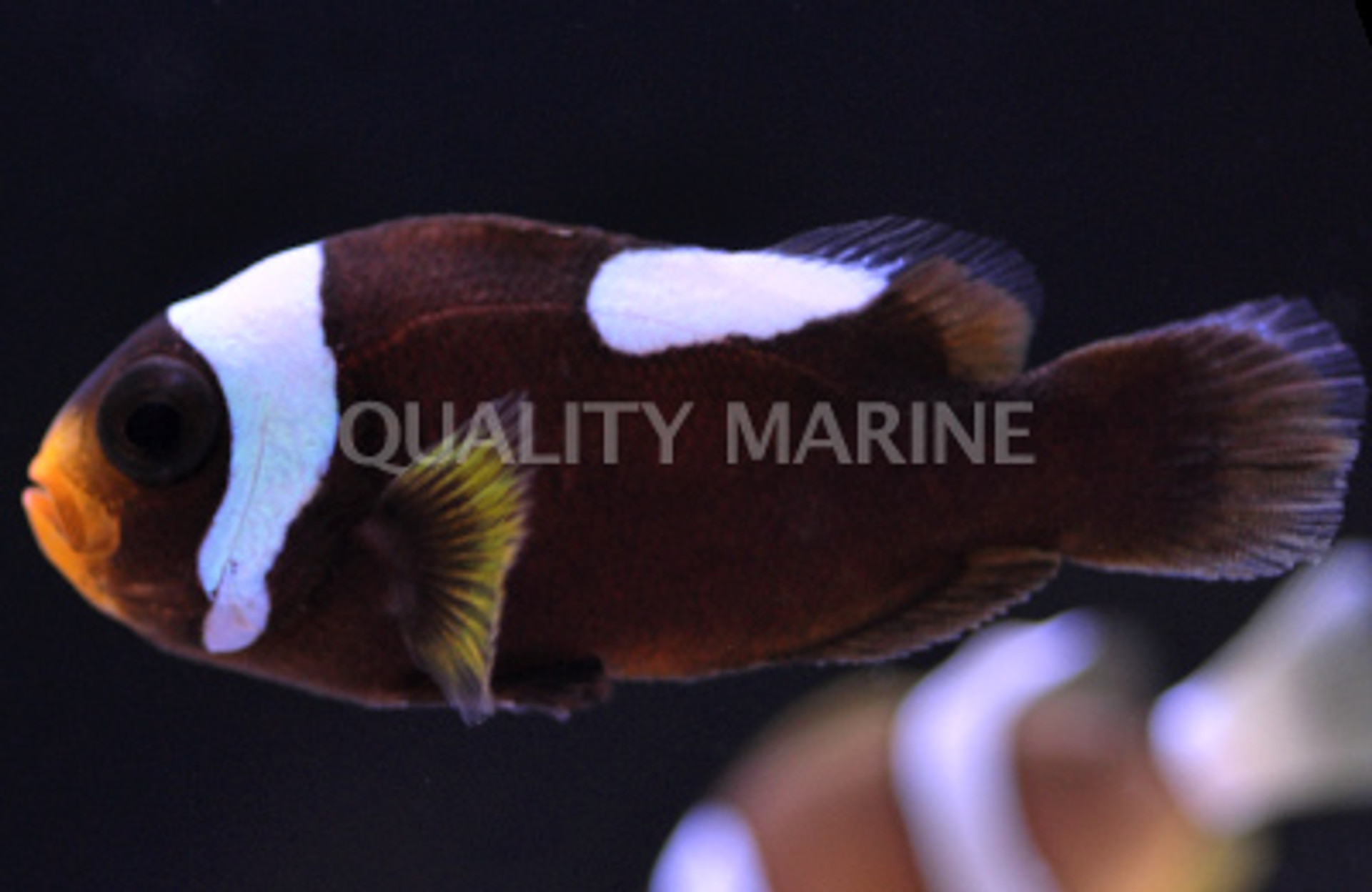Saddleback Clownfish (Amphiprion polymnus)

We tend to think of clownfishes as a characteristic part of coral reefs, and, of course this is largely true, but there are also a few species from the genus Amphiprion which have gravitated towards a very different sort of ecological specialization. If we leave the confines of the reef and venture out into the barren sand flats that surround them, well encounter the saddleback clownfishes. These fishes have adapted to life in an open, exposed landscape, where the only refuge is within the warm, tentacled embrace of their host anemones, which in this case is more often than not Haddons Carpet Anemone (Stichodactyla haddoni).
The saddlebacks can be recognized by their somewhat elongated, ovular body shape and the abbreviated, thickened white stripe that gives them their name. Four species make up this group, and they occur across the Indo-Australian Archipelago, from the Persian Gulf to the southern islands of Japan and down into the Solomon Islands.
In the Indian Ocean is A. sebae, recognized by its yellow tail. This fish is often confused with the similar A. clarkii in this region, which also have a yellow tail, but which differ in lacking a white margin to the dorsal fin.
In the Pacific, there are three regional populations which are presently treated as a single species, A. polymnus, but these clearly differ from one another in their coloration. All of these have a black caudal fin, allowing them to be told apart from A. sebae. The true A. polymnus occurs only in Indonesia; it typically has a well-developed white stripe on the caudal peduncle and, aside from the yellowish mouth, is otherwise always black. This is also the least saddled of this group, with the middle white stripe being relatively narrow and extending to the belly.
The remaining two species have this middle stripe much thicker and reaching only midway down the body, forming the saddle. Those from around Papua New Guinea and the Solomon Islands are a bright yellow-orange along the belly, black dorsally, and seemingly always with a black caudal fin. Compare this to the population found around the Philippines and the Gulf of Thailand, which can frequently appear almost entirely orange (vs yellowish). Darker (i.e. melanistic) specimens from this population develop a black band along the midline, which eventually can spread to fill the entire fish. This is different from those in Melanesia, where the darkening begins dorsally and extends downwards. Both of these are presently unrecognized as valid species, but they have previously been scientifically described.
Aside from Stichodactyla haddoni, these fishes have also been found associating with another anemone common to open sandy habitats, Macrodactyla doreensis. On rarer occasion, they can be spotted in Heteractis malu, Heteractis aurora, and Heteractis crispa. Unlike other Amphiprion groups which specialize in certain anemone species, the saddlebacks appear to instead specialize in their choice of habitat, making use of whichever anemones happen to be present. Theyll even use Bubbletips (Entacmaea quadricolor) in captivity, though theyve never been observed to do so in the wild.